Product Overview
† commercial product
Clomiphene is a nonsteroidal fertility agent used to induce ovulation in infrequently ovulating or anovulatory women, including patients with polycystic ovary syndrome (PCOS). The drug is effective at producing ovulation in patients with an intact hypothalamic-pituitary-ovarian axis and with ovaries that are capable of functioning normally. Clomiphene is often the first-line agent for these patients due to the relative ease of use and low economic expense. Clomiphene will induce ovulation in 80% of appropriately-chosen patients; roughly 40% will become pregnant within 6 cycles of treatment. Clomiphene is not effective at increasing pregnancy rates in women who spontaneously ovulate on a regular cycle. Clomiphene therapy is associated with only slightly increased rates of multiple births (3-5%) compared to the general population (1%). Multiple gestation, if it occurs, is usually twins. Less than 1% deliver triplets or more. The rate of multiparity with clomiphene as a single-agent is much lower than that which occurs with other fertility agents (e.g., menotropins or FSH). Clomiphene is sometimes used as a diagnostic tool to assess ovarian reserve. It is also administered to regulate the timing of ovulation in those patients receiving donor insemination. Interestingly, clomiphene has been used to increase sperm counts in male patients with idiopathic oligospermia. The FDA first approved clomiphene in 1967.
Clomiphene was recently reclassified as a selective-estrogen receptor-modulator (SERM) due to its ability to compete with estradiol for estrogen receptors at the level of the hypothalamus. Clomiphene blocks the normal negative feedback of circulating estradiol on the hypothalamus, preventing estrogen from lowering the output of gonadotropin releasing hormone (GnRH). During clomiphene therapy, the frequency and amplitude of GnRH pulses increase and stimulate the pituitary gland to release more FSH and LH. In turn, FSH and LH stimulate the ovaries to develop oocyte follicles. Clomiphene may allow several oocytes to develop to maturity in some patients. Estrogen produced by the maturing follicles causes the cervical mucus to thin and the endometrium to proliferate. As the estradiol from these follicles rises, the positive feedback to the pituitary causes the FSH/LH surge and is followed by mature oocyte release (ovulation). Once ovulation occurs, the corpus luteum forms, and progesterone levels rise as they do in a regular ovulatory cycle, and prepare the endometrium for implantation. Clomiphene must be used before the time of normal selection of the dominant follicle in an ovulatory cycle. The “traditional” timing of clomiphene treatment is from follicular phase cycle day 5 through 9; women typically ovulate 5-10 days after the last dose of the cycle. However, earlier initiation of treatment, longer courses (i.e., up to 10 days), or higher clomiphene doses may be needed dependent on the ovulatory response of the individual woman.
Clomiphene is also a weak estrogen-agonist and may interact with estrogen-receptor containing tissues, including the ovary, endometrium, vagina, and cervix. In the cervix, clomiphene can interfere with the ability of cervical mucus glands to produce thin secretions that favor sperm motility and conception. In some women, clomiphene may induce dry, thick cervical secretions. Studies are ongoing to assess the activity of clomiphene on breast tissues. The estrogenic effects of clomiphene are secondary to the primary effects on hypothalamic-pituitary-ovarian function. Clomiphene exhibits no androgenic, anti-androgenic, or progestational effects, nor does it affect pituitary-thyroid or pituitary-adrenal function. After clomiphene therapy discontinuation, there is usually no continued pharmacological effect on subsequent menstrual cycles. However, in some females, spontaneous ovulation has continued.
In selected female patients, clomiphene therapy is augmented by other medications to increase the occurrence of successful ovulation or pregnancy. These medications have included: dexamethasone for hirsutism or hyperandrogenism; estradiol to offset the cervical mucus-thickening effect of clomiphene; human chorionic gonadotropin (HCG) to induce the LH-surge for ovulation; and the use of metformin or troglitazone to offset the hyperinsulinemia that occurs in some patients with polycystic ovaries. Octreotide has been used as an adjunct to clomiphene therapy in patients with polycystic ovaries in order to reduce androgen secretion, decrease LH levels, and potentially decrease the incidence of ovarian hyperstimulation. The mechanisms of action of these drugs are distinct from clomiphene and do not appear to change the pharmacokinetics of clomiphene treatment. The regimens of each of these augmenting medications requires careful monitoring and timing of administration under the prescription of a healthcare professional experienced in fertility and endocrinology.
In men with idiopathic oligospermia, clomiphene may be effective at stimulating GnRH release from the hypothalamus, thus increasing the levels of LH and FSH released from the pituitary. LH and FSH then apparently stimulate the testicles to produce testosterone and sperm. Sperm volume and density are increased; however, clomiphene may not increase sperm maturation or motility.
Your health care provider needs to know if you have any of these conditions: Adrenal gland disease; blood vessel disease or blood clots; cyst on the ovary; endometriosis; liver disease; ovarian cancer; pituitary gland disease; vaginal bleeding that has not been evaluated; an unusual or allergic reaction to clomiphene, other medicines, foods, dyes, or preservatives; pregnant (should not be used if you are already pregnant); breast-feeding.
Clomiphene is contraindicated for use in patients who are hypersensitive to the drug or any of the components of the dosage form.
Clomiphene will only be effective at inducing ovulation in women with an intact hypothalamic-pituitary tract and ovarian response. Patients with untreated adrenal insufficiency; pituitary insufficiency or primary pituitary failure, pituitary adenoma or other pituitary tumor; primary ovarian failure; or untreated thyroid disease will not respond to clomiphene treatment.
Reduced responses to clomiphene therapy may occur in some females with diabetes mellitus, hirsutism (or hyperandrogenism), hyperinsulinemia, obesity, or lowered levels of endogenous estrogen. In some cases, the use of other medications with clomiphene may increase the chances of successful conception.
In men, clomiphene has only been effective for treating idiopathic oligospermia. Men with other infertility problems, including primary testicular failure or disruption of hypothalamic-pituitary function, are not expected to respond to clomiphene treatment.
Clomiphene is contraindicated for use in patients with abnormal or dysfunctional uterine bleeding of undetermined origin. Neoplasm (e.g., ovarian cancer or endometrial cancer) should be ruled out before clomiphene use. Because clomiphene may stimulate endometrial growth, it should be used cautiously in patients with uterine leiomyomata (fibroids) or endometriosis. It has been suggested that the use of fertility drugs, including clomiphene, might increase the risk of developing certain cancers. Some observational studies and a number of case reports gave rise to the speculation that the increased number of ovulatory follicles and/or high gonadotropin and estrogen levels induced by infertility treatment might enhance the development of breast cancer or ovarian cancer. However, infertility alone is an independent risk factor for the development of either breast or ovarian cancer. Also, case reports rarely control for other independent confounding factors such as delay in parity or family history. In one long-term cohort study of 1,197 infertile women, the incidence of ovarian or breast cancer was not significantly elevated in the groups receiving fertility treatments versus those not treated. The breast cancer rate, in particular, was not significantly different in either group versus the general female population. While more studies are needed, current data do not support an association between the use of fertility drugs and increased cancer risks.[1]
Prior to initiation of clomiphene treatment in women, a full gynecologic exam should be performed. Clomiphene should not be administered to patients with ovarian enlargement or a preexisting ovarian cyst that is not due to polycystic ovarian syndrome (PCOS). Clomiphene therapy should not be initiated until the diagnostic cause of the cyst or enlargement has been determined and ovary size has returned to normal. To minimize the risk of either uncomplicated ovarian enlargement or OHSS in any female, the lowest dose of clomiphene that produces ovulation should be used. Once an ovulatory dose has been determined, there is no advantage to increasing the dose. Some patients with polycystic ovary syndrome (PCOS) are unusually sensitive to gonadotropins and may have an exaggerated response to clomiphene treatment; lower dosages may be needed. All female patients should be instructed to report symptoms of ovarian enlargement, including abdominal pain or pelvic pain; nausea; vomiting; ascites (fluid and distension in the abdomen); or weight gain immediately. The current cycle of clomiphene should be halted if ovarian enlargement or OHSS occurs or if cysts develop; maximal ovarian enlargement may not be evident until several days after drug discontinuation. Clomiphene therapy should not be reinstated until ovary size has returned to normal. A complete pelvic exam should be repeated in all female patients prior to each treatment cycle.
Clomiphene is classified as FDA pregnancy risk category X, and is contraindicated for use after conception has occurred. There are no adequate human studies of the effects of clomiphene on the fetus. However, animal reproduction studies have shown adverse fetal effects in early gestation, including the development of ocular defects and congenital structural bladder and bowel changes. Clomiphene does not appear to increase the risk of congenital abnormalities or spontaneous abortion with normal use. However, data suggest that teratogenesis might occur if clomiphene is inadvertently continued in early pregnancy. To ensure that pregnancy has not occurred following a course of clomiphene, adequate evaluation of the patient is necessary before a subsequent clomiphene therapy course is undertaken. In addition to potential effects on the fetus, clomiphene use does slightly increase the risk of multiple gestation and the risks inherent with such pregnancies.[2]
It is not known whether clomiphene is excreted in human milk. Because many drugs are excreted in human milk, caution should be exercised if clomiphene is administered to a woman who is breast-feeding.[2] In some patients, clomiphene may reduce lactation; several studies found that it suppresses lactation in women who did not want to breast-feed. The mechanism may be due to decreases in serum prolactin, especially the post-stimulation surge in serum prolactin. It is likely that clomiphene would interfere with lactation in a nursing mother.[3] Alternate forms of feeding for the infant would be recommended if clomiphene therapy is necessary in the mother.
Clomiphene is contraindicated in those patients with a history of hepatic disease or dysfunction. Reduced clearance of clomiphene may result in higher plasma concentrations and may potentially increase the risk of certain side effects. In addition, hepatotoxicity has occurred in some patients in conjunction with ovarian hyperstimulation syndrome (OHSS). Determinations of liver function should be performed in all patients prior to clomiphene therapy.
Clomiphene should be used cautiously in patients with major depression or psychosis. There is a possibility that the condition may be exacerbated. Depression may be common in the infertile population due to the experience of loss present in cycles in which no pregnancy occurs.
Clomiphene should be used extremely cautiously in patients with active thrombophlebitis or other active thromboembolic disease. Like other selective estrogen receptor modifiers (SERMs), clomiphene exhibits some estrogenic activity. Rarely, thromoembolic events have been reported in patients receiving clomiphene.
Clomiphene may make patients dizzy, or they may have blurred vision. Caution patients against driving or operating machinery, or performing tasks that need mental alertness, until they are aware of how clomiphene affects them. The patient should promptly report any visual disturbance to their health care prescriber, and an ophthalmologic examination should be performed.
Drinking alcoholic beverages, including ethanol intoxication, or tobacco smoking are two lifestyle choices that may decrease fertility or the effectiveness of fertility treatments in some women and/or men. Patients should avoid excessive alcohol or tobacco consumption while pursuing fertility therapies such as those using clomiphene.
In women, androgens may antagonize the effects of some fertility treatments. Prasterone, dehydroepiandrosterone, DHEA is converted via hydrosteroid dehydrogenases and aromatase into androstenedione, testosterone, and estradiol by peripheral tissues.[4] Increased endogenous levels of the hormone prasterone, dehydroepiandrosterone, DHEA have been associated with hyperandrogenism and infertility; it is postulated that nutritional supplementation with DHEA may reduce the response to clomiphene treatment.
Some herbal or alternative therapies may have effects on hypothalamic-pituitary function or hormone concentrations and thus may interfere with fertility therapies. Chasteberry, chaste tree fruit, Vitex agnus-castus may interfere with the therapeutic activity of infertility drugs.[5] A case of ovarian hyperstimulation syndrome and multiple follicular development has been reported in a woman who took chasteberry prior to one of her IVF protocol cycles; serum gonadotropin and hormone levels were disordered and pregnancy was not accomplished.[5] Due to a lack of data, herbal therapies touted for women’s health are not recommended for use with prescribed fertility treatments.
Black cohosh, Cimicifuga racemosa, is a phytomedicinal that may potentially suppress luteinizing hormone (LH).[6][7][8] It could potentially antagonize certain fertility agents that augment gonadotropin release. Due to a lack of data, any herbal therapies touted for women’s health are not recommended for use with prescribed fertility treatments.
Theoretically, the soy isoflavones may compete with drugs that selectively modulate estrogen receptors. Soy isoflavones should be used with caution in patients taking clomiphene.[9]
Clomiphene therapy is associated with only slightly increased rates of multiple births (3-5%) compared to the general population (1%). Over 90% of women on clomiphene therapy experience single gestations. Multiple gestation, if it occurs, is usually twins. Less than 1% deliver triplets or more. The rate of multiparity with clomiphene as a single-agent is typically much lower than that which occurs with other fertility agents (e.g., menotropins or FSH).
Clomiphene therapy is generally well tolerated, and side effects do not commonly interfere with the continuation of treatment. Many patients experience vasomotor “hot flashes” (10.4%), which result from the anti-estrogen effects; these subside at the completion of each 5 day dosage cycle. Mild pelvic discomfort without enlargement of the ovaries occurs in roughly 5.5%. Breast tenderness/mastalgia was reported in 2.1% of patients. Less frequent side effects include dizziness (< 1%), fatigue (< 1%), and headache (1.3%). Abnormal uterine bleeding, reported as menorrhagia or breakthrough bleeding, occurred in 1.3% of patients.[10] Menstrual irregularity and an increase in pain associated with ovulation (mittelschmerz) may occur (< 1.5%).
The normal thinning of the cervical mucus in preparation for ovulation and conception may be impaired by clomiphene therapy. Cervical mucus thickening may result in up to 25% of patients taking clomiphene and may potentially decrease the ability of sperm to reach the oocyte. Vaginal dryness may also occur. Although controversial, estrogens have been administered in some patients on cycle day 10 to the time of the LH surge (ovulation) in order to combat mucus drying and thickening. There is little documentation of the efficacy of estrogen in improving pregnancy rates.
Roughly 14% (1 out of every 7 women) on clomiphene therapy experience uncomplicated ovarian enlargement. Pelvic examinations should be performed in patients who complain of abdominal discomfort (pelvic pain) during therapy. If enlargement or cysts are present, the current clomiphene cycle should be discontinued and further therapy withheld until resolution of the signs and symptoms and until the ovary is no longer enlarged. Use the lowest dose consistent with expected clinical results to minimize the hazard associated with occasional abnormal ovarian enlargement associated with clomiphene. Maximal enlargement of the ovary may not occur until several days after discontinuation of the recommended clomiphene dose. If substantial ovarian enlargement occurs after ovulation, sexual intercourse should be prohibited because of the risk of hemoperitoneum secondary to ruptured ovarian cysts. Adjunctive agents (i.e., human chorionic gonadotropin, HCG) should be withheld if ovarian enlargement is present in order to prevent progression to ovarian hyperstimulation (OHSS). Most ovarian cysts or enlargements will regress within a few days to weeks after discontinuation of clomiphene. Laparoscopy is rarely needed. Once recovery occurs, the dosage or duration of the next cycle of clomiphene should be reduced. Ovarian enlargement or ovarian cyst formation may be more likely to occur in patients with polycystic ovary syndrome or in those patients on higher cyclic dosages, receiving treatment beyond 5 days in each cycle, or receiving more than six total cycles of therapy.[10]
Abdominal pain, nausea/vomiting (2.2%), acute abdomen (< 1%), constipation (< 1%), diarrhea (< 1%), and weight gain (< 1%) have been noted with clomiphene. Of note, some of the early warning signs of the ovarian hyperstimulation syndrome are abdominal pain and distention, nausea, vomiting, diarrhea, and weight gain. Instruct the patient to report any abdominal or pelvic pain, weight gain, discomfort, or distention.[10]
Clomiphene therapy can result in ovarian hyperstimulation syndrome (OHSS). The incidence of OHSS with clomiphene is less than that which occurs with the administration of menotropins or follicle-stimulating hormone. OHSS is a medical event distinct from uncomplicated ovarian enlargement and requires inpatient care for supportive management of the patient. The syndrome may be severe. The pathogenesis of this syndrome is still unknown, but probably results from the production and secretion of several substances (i.e., prostaglandin, cytokines, vascular endothelial growth factor, and activation of the ovarian-renin-angiotensin system) in response to the stimulation of ovulation. Patients have exhibited increased plasma angiotensin-converting enzyme (ACE) activity in association with this syndrome. Some early warning signs include severe abdominal pain and distention, pelvic pain, nausea/vomiting, diarrhea, and weight gain. Severe cases produce clinical signs such as gross ovarian enlargement, gastrointestinal symptoms, ascites, dyspnea, oliguria, and pleural effusion. Other reported symptoms of OHSS include pericardial effusion, anasarca, hydrothorax, acute abdomen, elevated hepatic enzymes, hypotension, renal failure (unspecified), pulmonary edema, intraperitoneal and ovarian hemorrhage, deep venous thrombosis, stroke, torsion of the ovary, and acute respiratory distress. Elevated urinary steroid levels, electrolyte imbalance, hypovolemia, hemoconcentration, and hypoalbuminemia may also occur. Hemoconcentration, hypovolemic shock, or thrombotic events may be fatal. Abdominal and pelvic examination should be done carefully in severe cases of OHSS due to the fragility of the enlarged ovaries. Conception may result in progression to the severe form of OHSS. Clomiphene therapy should not be reinstated until ovary size has returned to normal.[10]
Clomiphene can cause treatment-associated visual impairment in roughly 1.5% of patients. Although these events are infrequent, the incidence may increase with increasing dosage. Vision changes require that the patient notify the prescriber. Adverse effects include blurred vision, diplopia, scintillating scotomata (spots and flashes), and photophobia. Postmarketing, abnormal accommodation, cataracts, ocular pain, macular edema, optic neuritis, photopsia, posterior vitreous detachment, retinal hemorrhage, retinal vascular spasm, and temporary loss of vision have been reported. There are rare reports of temporary but severe diminished visual acuity (blindness). Visual symptoms are accentuated upon exposure to bright light. These effects can impair a patient’s ability to operate heavy machinery or drive an automobile. If visual disturbances occur, clomiphene therapy should be discontinued, and complete ophthalmologic testing should be performed. In most cases, clomiphene induced visual changes are reversible within several days of drug discontinuation.[10]
Dermatological adverse reactions to clomiphene therapy include dermatitis or rash (unspecified) (< 1%) and alopecia (< 1%). Postmarketing, erythema multiforme, urticaria, pruritus, acne vulgaris, erythema, erythema nodosum, hypertrichosis, and allergic dermatitis have been reported.[10]
Central nervous system (CNS) adverse effects do not happen frequently (< 1% of patients using clomiphene). CNS adverse effects include anxiety, depression, insomnia, lightheadedness, and restlessness. Postmarketing, migraine, psychosis, emotional lability, and irritability have been reported.[10]
Rare side effects occurring in < 1% of patients using clomiphene include appetite stimulation, increased urinary frequency, and weight loss.[10]
Postmarketing, pulmonary embolism, thrombo-phlebitis, retinal thrombosis, arrhythmia, chest pain (unspecified), edema, hypertension, palpitations, dyspnea, and sinus tachycardia have been reported with clomiphene.[10] Rare thromboembolic events, such as pulmonary embolism, arterial occlusion, and phlebitis have been reported in the literature in association with clomiphene therapy in women who have not had concurrent ovarian hyperstimulation. The association of clomiphene with the development of thromboembolic disease is not clear. Certain patients with other risk factors for thromboembolism may be at higher risk.
Prolonged use of clomiphene may increase the risk of a borderline or invasive ovarian tumor, although a causal relationship between ovarian hyperstimulation and ovarian cancer has not been determined. If ovarian cysts do not regress spontaneously, perform a thorough evaluation to rule out ovarian neoplasia. Postmarketing, various cancers have been noted including but not limited to breast, ovarian, liver, endometrial, nervous system, trophoblastic, and neoplasms of offspring.[10] Some observational studies and a number of case reports gave rise to the speculation that infertility treatments might enhance the risk of secondary malignancy in women (i.e, breast cancer or ovarian cancer). However, infertility alone is an independent risk factor for the development of either breast or ovarian cancer. Case reports and observational studies suggesting an association of cancer to fertility treatments rarely control for other independent confounding factors such as delay in parity or family history. In one long-term cohort study of 1,197 infertile women, the incidence of ovarian or breast cancer was not significantly elevated in the groups receiving fertility treatments versus those not treated. The breast cancer rate, in particular, was not significantly different in either group versus the general female population.[1] While more studies are needed, the current data do not support an association between the use of fertility drugs and increased cancer risk.
Clomiphene does not appear to increase the risk of congenital abnormalities or spontaneous abortion with normal use. The overall incidence of reported birth anomalies from pregnancies associated with maternal clomiphene ingestion during the investigational studies was within the range of that reported in published references for the general population.[10] However, data suggest that teratogenesis might occur during organogenesis if clomiphene is inadvertently continued in early pregnancy. Numerous congenital malformations have been reported postmarketing. Further, animal studies reveal a possible connection of clomiphene use with congenital ocular and bowel syndromes or other structural malformations. It is important that clomiphene therapy be continued in subsequent fertility treatment cycles only after pregnancy has been ruled out and normal withdrawal bleeding (menses) has occurred.
Postmarketing, elevated hepatic enzymes and hepatitis have been noted with clomiphene. Of note, transient liver function test abnormalities suggestive of hepatic dysfunction that may be accompanied by morphologic changes on liver biopsy have been reported in association with the ovarian hyperstimulation syndrome.[10]
This list may not include all possible adverse reactions or side effects. Call your health care provider immediately if you are experiencing any signs of an allergic reaction: skin rash, itching or hives, swelling of the face, lips, or tongue, blue tint to skin, chest tightness, pain, difficulty breathing, wheezing, dizziness, red, a swollen painful area/areas on the leg.
Clomiphene is classified as FDA pregnancy risk category X, and is contraindicated for use after conception has occurred. There are no adequate human studies of the effects of clomiphene on the fetus. However, animal reproduction studies have shown adverse fetal effects in early gestation, including the development of ocular defects and congenital structural bladder and bowel changes. Clomiphene does not appear to increase the risk of congenital abnormalities or spontaneous abortion with normal use. However, data suggest that teratogenesis might occur if clomiphene is inadvertently continued in early pregnancy. To ensure that pregnancy has not occurred following a course of clomiphene, adequate evaluation of the patient is necessary before a subsequent clomiphene therapy course is undertaken. In addition to potential effects on the fetus, clomiphene use does slightly increase the risk of multiple gestation and the risks inherent with such pregnancies.[2]
It is not known whether clomiphene is excreted in human milk. Because many drugs are excreted in human milk, caution should be exercised if clomiphene is administered to a woman who is breastfeeding.[2] In some patients, clomiphene may reduce lactation; several studies found that it suppresses lactation in women who did not want to breastfeed. The mechanism may be due to decreases in serum prolactin, especially the post-stimulation surge in serum prolactin. It is likely that clomiphene would interfere with lactation in a nursing mother.[3] Alternate forms of feeding for the infant would be recommended if clomiphene therapy is necessary in the mother.
Store this medication at 68°F to 77°F (20°C to 25°C) and away from heat, moisture and light. Keep all medicine out of the reach of children. Throw away any unused medicine after the beyond use date. Do not flush unused medications or pour down a sink or drain.
- Potashnik G, Lerner-Gava L, Genkin L, et al. Fertility drugs and the risk of breast and ovarian cancers: results of a long-term follow-up study. Fertil Steril 1999;71:853-859.
- Serophene (clomiphene citrate) package insert. Rockland, MA: EMD Serono; 2010 June.
- Zuckerman H, Carmel S. The inhibition of lactation by clomiphene. J Obstet Gynaecol Br Commonw 1973;80:822-3.
- Kroboth PD, Slalek FS, Pittenger AL et al. DHEA and DHEA-S: a review. J Clin Pharmacol 1999;39:327-48.
- Cahill DJ, Fox R, Wardle PG, et al. Multiple follicular development associated with herbal medicine. Hum Reprod 1994;9:1469-70.
- Duker EM, Kopanski L, Jarry H, et al. Effects of extracts from Cimicifuga racemosa on gonadotropin release in menopausal women and ovariectomized rats. Planta Med 1991;57:420-4.
- Eagon PK, Tress NB, Ayer HA, et al. Medicinal botanicals with hormonal activity (abstract 1073). Proc Amer Assoc Cancer Res 1999:40.
- Lieberman S. A review of Cimicifuga racemosa (black cohosh) for the symptoms of menopause. Journal of Women’s Health 1998;7:525-9.
- Duffy C, Cyr M. Phytoestrogens: potential benefits and implications for breast cancer survivors. J Womens Health (Larchmt). 2003 Sep;12(7):617-31.
- Clomid (clomiphene citrate) package insert. Bridgewater, NJ: Sanofi-Aventis US, LLC; 2012 Oct.
503A vs 503B
- 503A pharmacies compound products for specific patients whose prescriptions are sent by their healthcare provider.
- 503B outsourcing facilities compound products on a larger scale (bulk amounts) for healthcare providers to have on hand and administer to patients in their offices.
Frequently asked questions
Our team of experts has the answers you're looking for.
A clinical pharmacist cannot recommend a specific doctor. Because we are licensed in all 50 states*, we can accept prescriptions from many licensed prescribers if the prescription is written within their scope of practice and with a valid patient-practitioner relationship.
*Licensing is subject to change.
Each injectable IV product will have the osmolarity listed on the label located on the vial.

Given the vastness and uniqueness of individualized compounded formulations, it is impossible to list every potential compound we offer. To inquire if we currently carry or can compound your prescription, please fill out the form located on our Contact page or call us at (877) 562-8577.
We source all our medications and active pharmaceutical ingredients from FDA-registered suppliers and manufacturers.

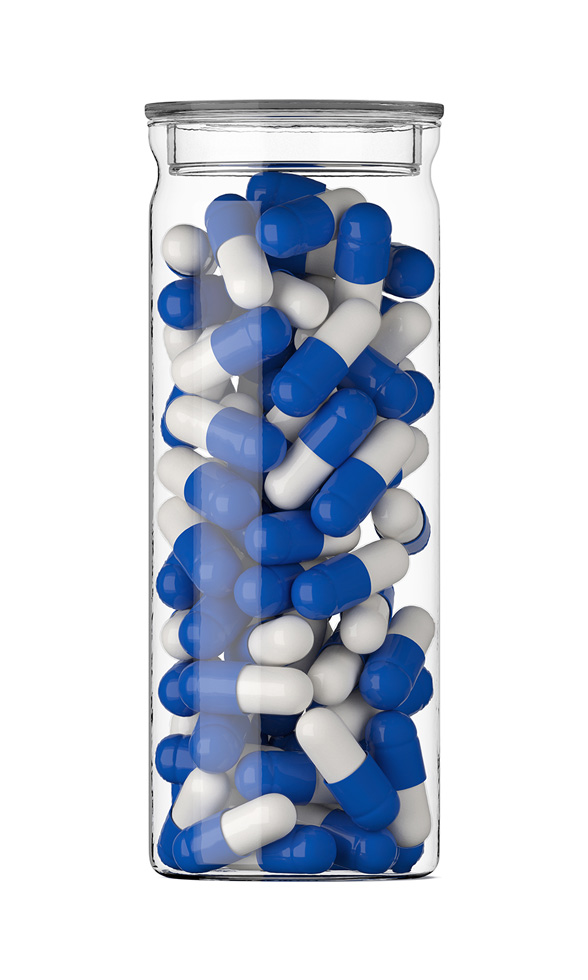
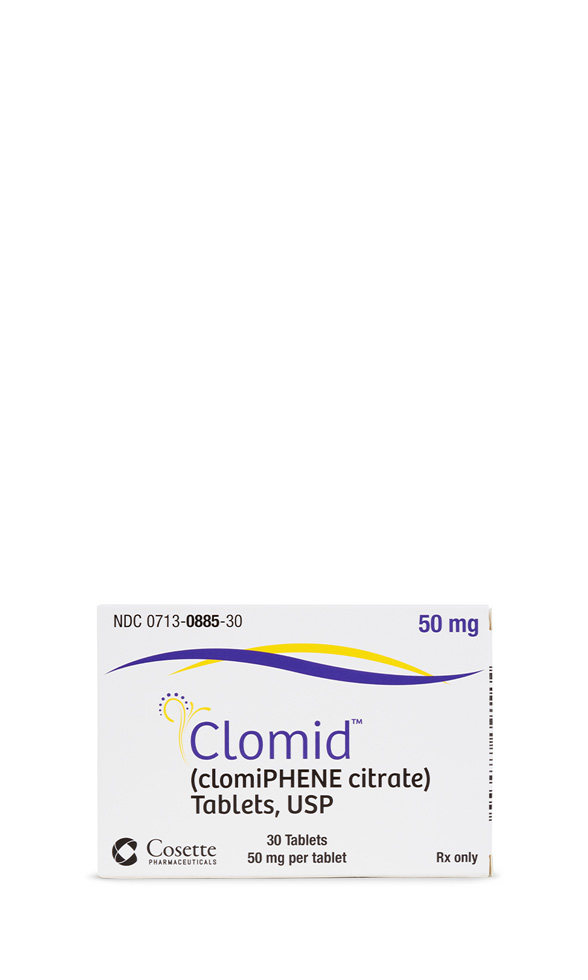
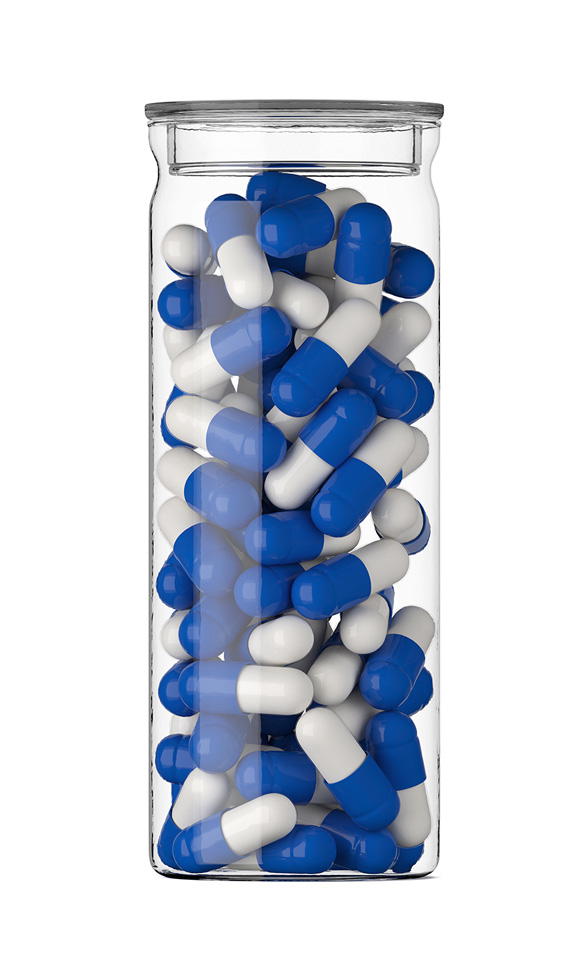 Enclomiphene Citrate Capsules
Enclomiphene Citrate Capsules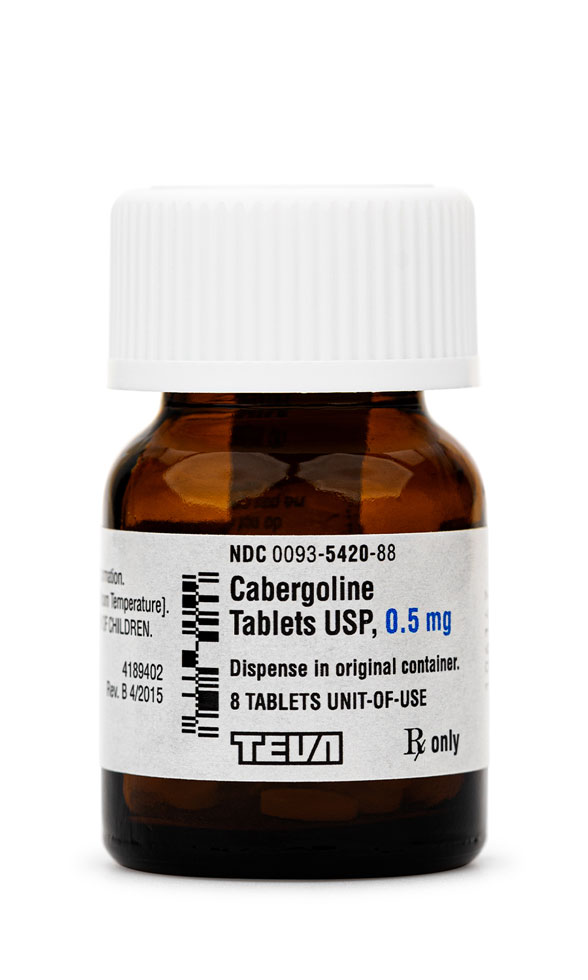 Cabergoline Tablets
Cabergoline Tablets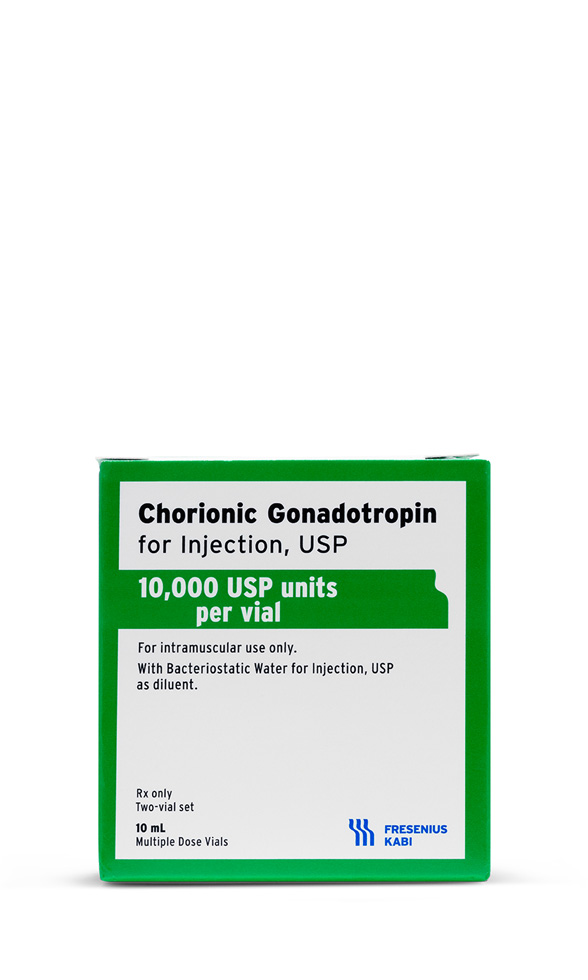 HCG Injection
HCG Injection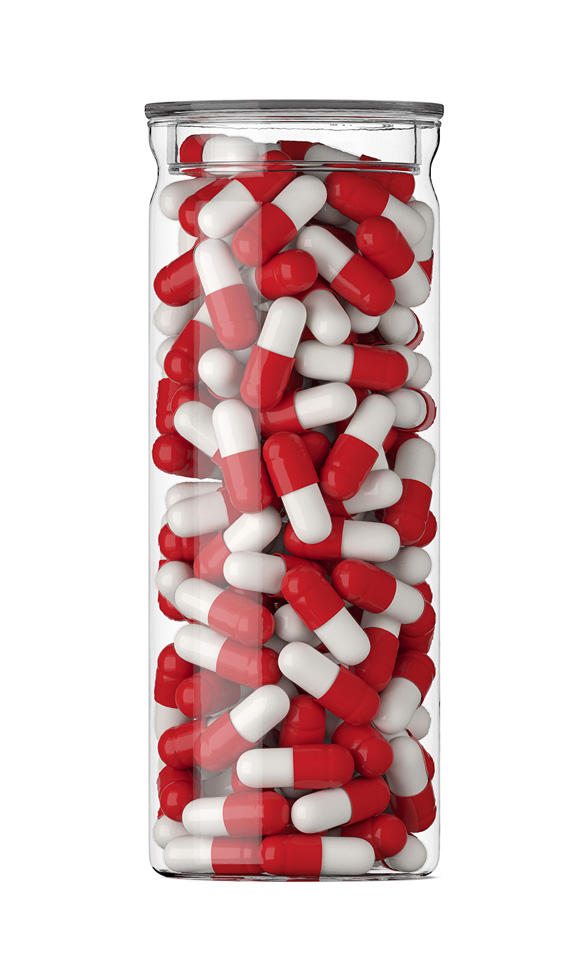 Anastrozole Capsules
Anastrozole Capsules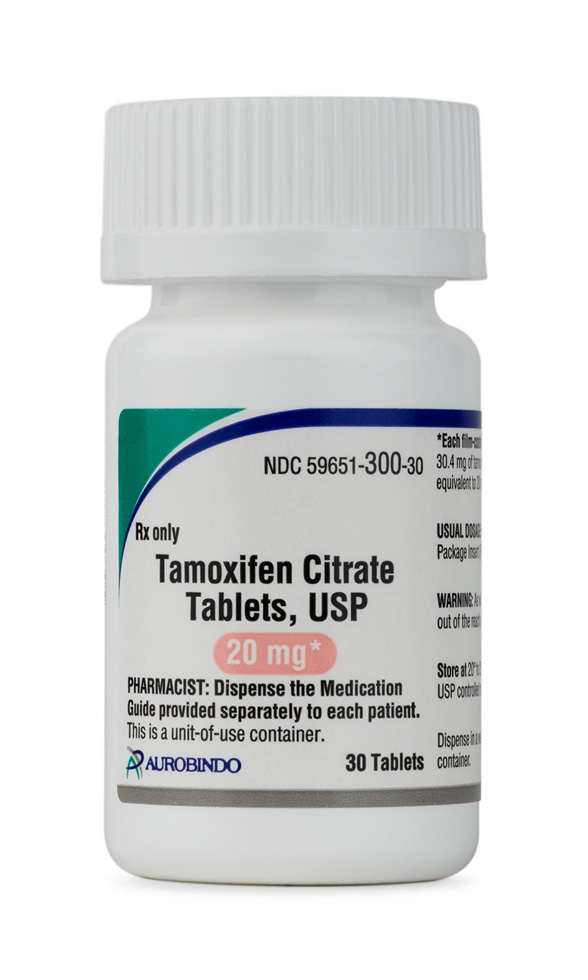 Tamoxifen Citrate Tablets
Tamoxifen Citrate Tablets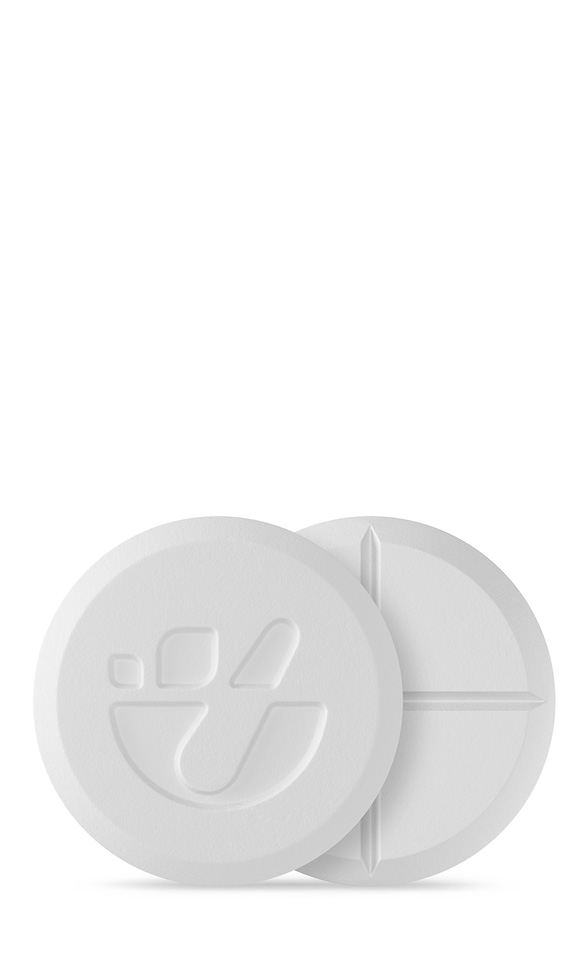 Oxandrolone Tablets
Oxandrolone Tablets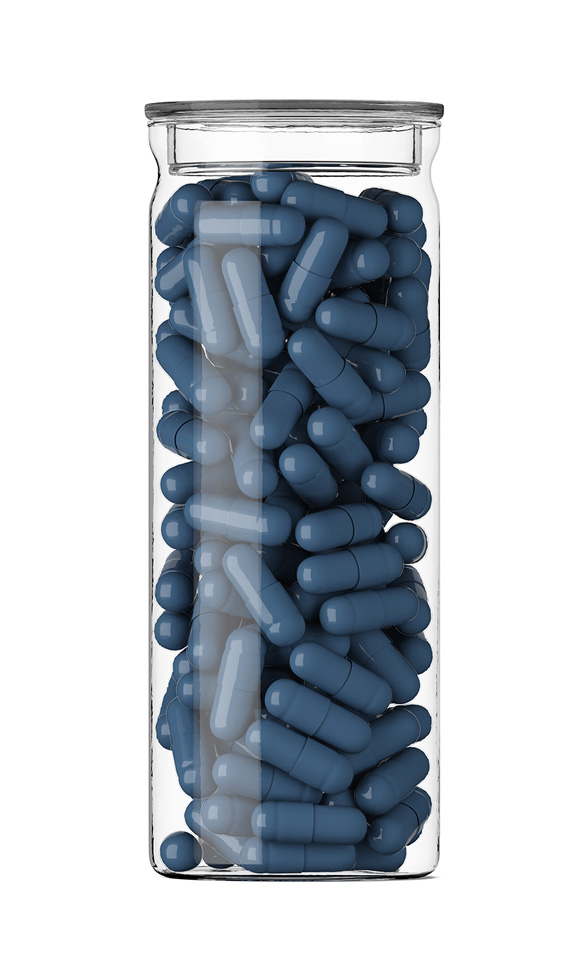 Methylene Blue Capsules
Methylene Blue Capsules